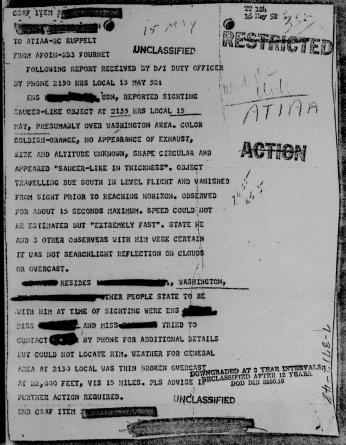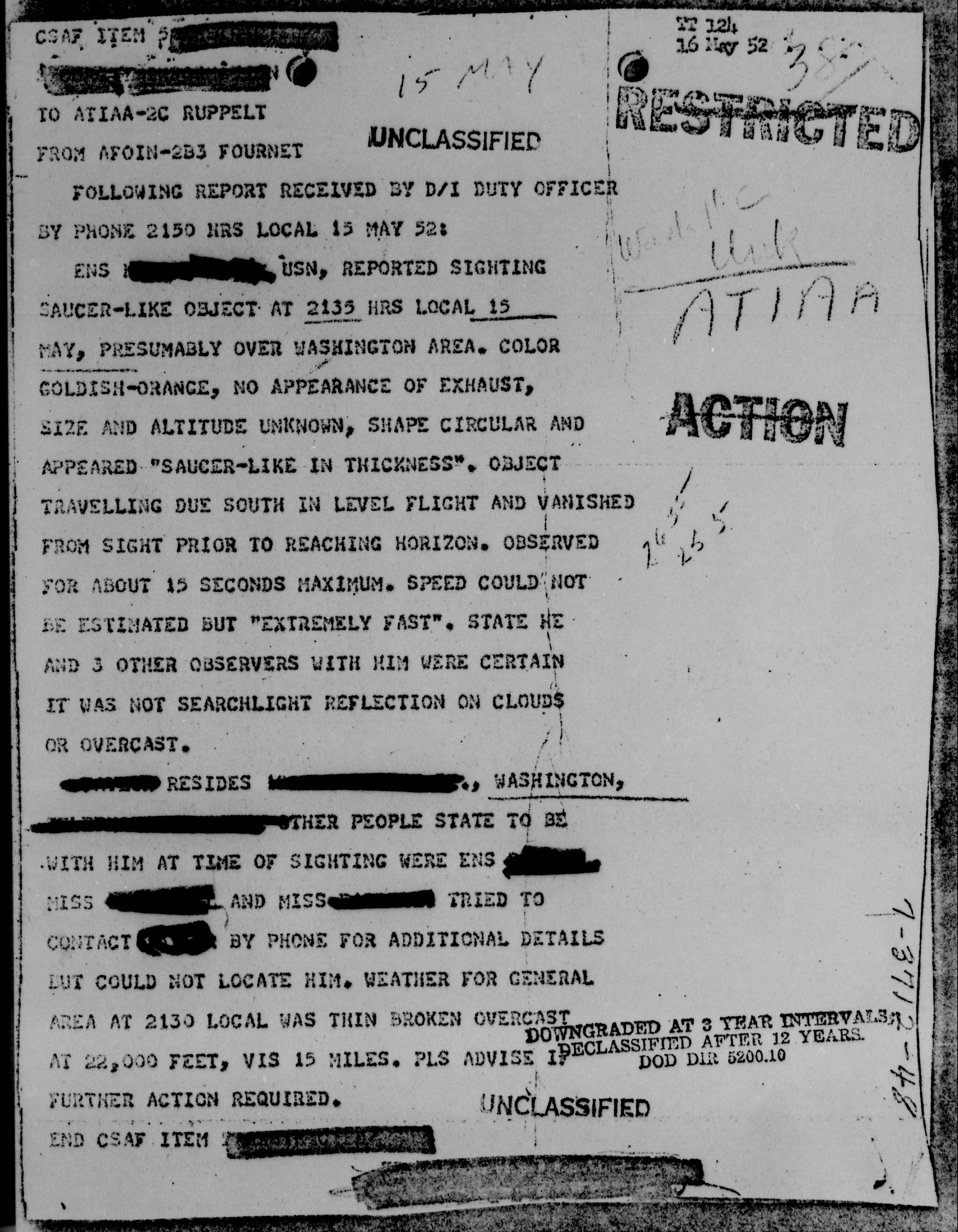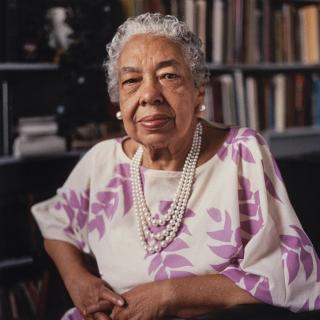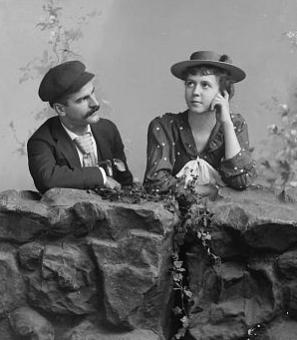D.C. vs. The Flying Saucers... On Screen and in Real Life
From the late 1940s until 1969, the U.S. Air Force kept a record of all of its investigations into supposed alien activity in a report called Project Blue Book. Until a few days ago, the project archive had been accessible only by visiting the National Archives in downtown D.C. But, now the records are online! So, you can see the reports on the many UFO sightings that occurred in the Washington area over the years.
Of course, UFO's have long been a source of fascination to Americans and images of alien invaders in the nation's capital have captured our imagination for decades. In honor of the new Project Blue Book release, we take a look at the 1956 Columbia film, Earth vs. The Flying Saucers, which had a special connection to Washington -- not only in the plot of the movie itself, but in the real-life inspiration behind some of the scenes of terror.
Unlike the peaceful alien Klaatu in the 1951 science fiction thriller The Day the Earth Stood Still, the extraterrestrial flying saucer pilots who descend upon Washington in director Fred Sears' Earth vs. The Flying Saucers only pretend to want to negotiate with Earth's leaders. In reality, they've got the conquest of the planet and subjugation of the human species on their minds--a premise markedly similar to director George Pal's 1953 film War of the Worlds, a Paramount pictures production based on the 1898 H.G. Wells novel. That was no accident, since Columbia Pictures coveted the critical and box-office success of that film.
But Columbia couldn't afford the color photography, elaborate art design and spectacular high-end special effects that had helped make Pal's film so powerfully vivid. Instead, the studio turned to Ray Harryhausen, a master of a clever but frugal special effects technology in which animated models and live action were blended together in a split screen. Today, Harryhausen probably is best known for his animation work in the 1949 giant ape picture Mighty Joe Young, which won an Academy Award for best visual effects, and for the swordfighting skeleton in 1958's Seventh Voyage of Sinbad. But in some ways, Earth vs. the Flying Saucers was an equally challenging assignment, because Harryhausen had to simulate the destructive effect of a flying saucer attack on the nation's capital. In doing so, some think he may have been inspired by a real-life train accident that had occurred a few years before at Union Station.
Even before the film's script--by George Yates and "Raymond T. Marcus, the pseudonym of Hollywood Blacklist victim Bernard Gordon--had been completed, Harryhausen got to work creating the Washington sequences, according to Harryhausen biographer Mike Hankin. Harryhausen traveled to the city and took dozens of photographs, which he used to plan the shots involving the saucers. He actually painted the alien spacecraft into the photos and then inserted the pictures into the shooting script, in order to guide the actors and crew.
According to Hankin, the majority of the shoot in Washington involved actors and extras performing reactions to the alien attack in locations such as Union Station and the U.S. Capitol. The filmmakers were surprised by the ease with which they obtained permits from Washington officials to shoot in those locations. But as Hankin notes, "potential damage to monuments from a flying saucer was probably not very high on their list of concerns." After all, the attacking force was back in Harryhausen's shop in Culver City, Calif., and it wasn't really capable of doing any harm.
Harryhausen's UFO armada consisted of three aluminum saucers that were just three inches in diameter, plus a slightly larger six-inch craft and a 12-inch one that was made out of wood. The latter was big enough to hold a cup-shaped "death ray" gun on its underside to obliterate Earthlings. But those tiny spacecraft were big enough to wreak havoc on the equally tiny mock Washington that Harryhausen also created, which considered of detailed models of landmarks such as the U.S. Capitol, the Library of Congress Building, the Washington Monument, and the Supreme Court.
Harryhausen mixed stop-action footage utilizing the models with stock footage that he found in the library of Republic Pictures, including shots of explosions from war movies and bits and pieces of other sci-fi films.
The finished result was a startling onslaught of horrific destruction. In one of the most disturbing sequences, the Washington Monument is struck by a flying saucer and snapped in two, while another slices through the Capitol dome as if it were an overripe cantalope. Film writer Peter Biskind describes it as "a storm of pillars and pediments, great chunks of concrete and flying glass hurtling every which way."
One of the most shocking images, at least for Washingtonians, was that travelers fleeing in terror as a flying saucer crashed through the window on the west-side entrance to Union Station. Some have speculated that Harryhausen may have been inspired by the January 15, 1953 crash of the Federal Express passenger train, which lost control and slammed into the building, going through the floor of the concourse into the station's basement.
As film historian Blair Davis notes, some of the shots created by Harryhausen were so striking that they were recycled in later movies as well. The images of the Washington monument collapsing, for example, later found its way into the 1957 sci-fi horror flick The Giant Claw.






![Sketch of the mythical fuan by Pearson Scott Foresman. [Source: Wikipedia]](/sites/default/files/styles/crop_320x320/public/2023-10/Goatman_Wikipedia_Faun_2_%28PSF%29.png?h=64a074ff&itok=C9Qh-PE1)












